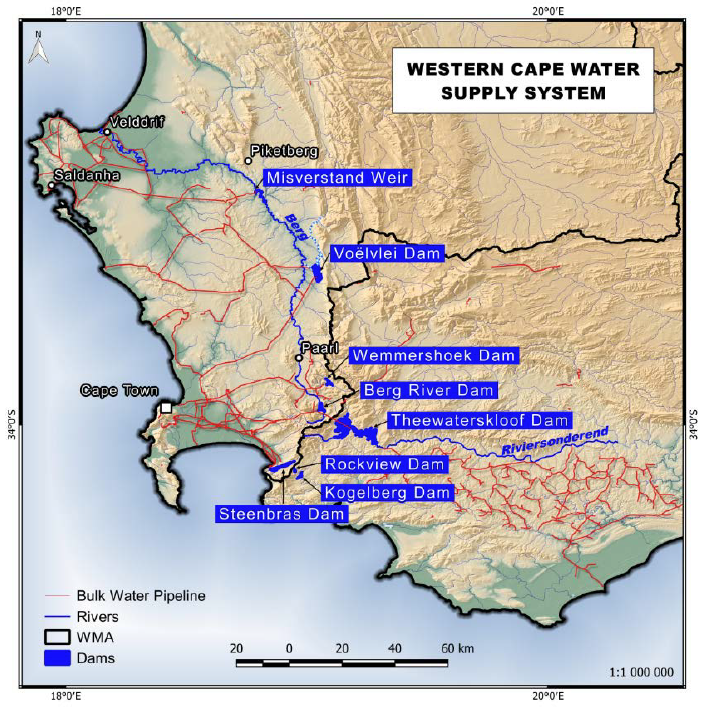|
The Western Cape Water Supply System (WCWSS) provides water to the communities of
Greater Cape Town, Stellenbosch, Paarl and Wellington, as well as to towns on
the West Coast and in the Swartland region. Irrigators along the Berg and Eerste
rivers and irrigators and urban users in the Riviersonderend catchment, in the
Breede Water Management Area (WMA), also receive water from the system. The
major water user from the WCWSS is the urban sector within the City of Cape Town
(CCT).
The main storage dams of the WCWSS are the Theewaterskloof and Voëlvlei dams
(owned and operated by the Department of Water and Sanitation (DWS); the Berg
River Dam (owned by the Trans Caledon Tunnel Authority and operated by the DWS)
and the Wemmershoek, Upper Steenbras and Lower Steenbras dams (owned and
operated by the CCT). The water storage in the system is evaluated towards the
end of the wet season (no later than 1 November), to assess whether or not
supplies must be restricted for the following year, to ensure that sufficient
water remains for the more essential uses, were a drought to occur. The dams are
operated as an integrated system to minimise spillage and maximise storage
during drought months.
Operational challenges include the need for close co-operation between the DWA
and CCT and with authorities such as Eskom, management of varying water quality,
and the operation of the Riviersonderend–Berg River Tunnel system, that provides
the means of transferring water from the Breede-Gouritz WMA into the
Berg-Olifants/Doorn WMA.

Figure 3: Western Cape Water Supply System Area
|